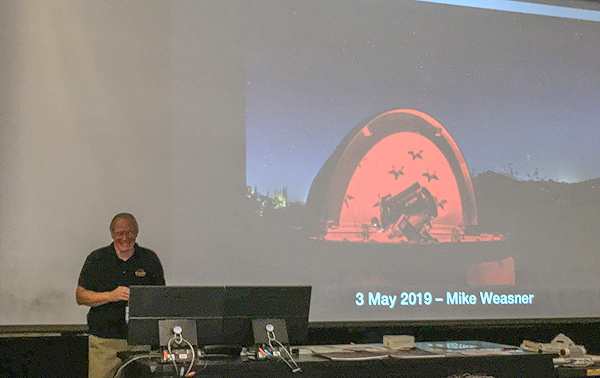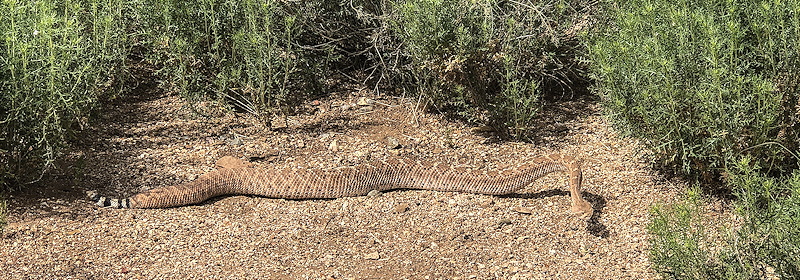Talk at Lunar and Planetary Laboratory;
Moon & Earthshine, NGC3359 Galaxy
Posted: 8 May 2019
Cloudy skies returned on Wednesday afternoon, 1 May 2019, several hours earlier than forecast. Friday, 3 May, was clear but that night I gave a talk about my observatory at the regular monthly meeting of the Tucson Amateur Astronomy Association (TAAA). The talk was held at the Lunar and Planetary Laboratory in the Kuiper Space Sciences building at the University of Arizona. My talk was the first in a new series of TAAA talks on member observatories. It was exciting to be at this famous place and giving a talk.



Photos by Chip P.
Saturday morning, 4 May, a member of TAAA came to visit my observatory and see a SkyShed POD upclose.
Saturday afternoon the contractor who did my replacement POD Zenith Table (PZT) returned to check out a couple of issues (premature weathering and a sag in the table). We removed the table so he could take it back to his shop to address the issues. I'll update my PZT report after it is re-installed.
Clouds returned on Saturday. Sunday, 5 May, dawned clear. Sunday morning the forecasts for Sunday night from three different sources varied from clear to partly cloudy to overcast. Which was right? Clouds arrived late morning and by night the sky was mostly cloudy. The sky continued to be cloudy on Monday, 6 May. I did get to see a neighbor that morning:

Click or tap on image for larger version
Cloudy skies continued until Tuesday, 7 May.
|
Open: Tuesday, 7 May 2019, 1924 MST Temperature: 68°F |
Session: 1350 Conditions: Mostly clear |
Equipment Used:
12" f/8 LX600 w/StarLock
2" 24mm UWA eyepiece
Camera:
D850 DSLR
1930 MST: LX600 ON, StarLock OFF, High Precision OFF.
Viewed the crescent Moon, 102X.
Mounted the D850 DSLR at prime focus of the 12" telescope. Took these photos of the Moon and Earthshine:
1/160sec, ISO 400

1/15sec, ISO 400

Slewed to NGC3359 (galaxy) in the hopes of re-imaging it. It was far enough from the Moon that the Moon's light would not interfere. Then slewed to the star Capella. Checked the finderscope alignment (OK). Waited for the sky to get darker.
2012 MST: focused on Capella and locked the primary mirror.
2020 MST: High Precision ON.
Slewed to NGC3359.
2023 MST: StarLock ON.
Unfortunately, astronomical seeing was poor. There were many errors in autoguiding. The longest exposure I could get was this StarLock autoguided, 104 seconds, ISO 6400, White Balance 5000K:

2056 MST: StarLock OFF, High Precision OFF.
Gave up imaging due to the poor seeing.
2105 MST: LX600 OFF.
|
Close: Tuesday, 7 May 2019, 2115 MST Temperature: 57°F |
Session Length: 1h 51m Conditions: Clear |
Comments are welcome using Email. Twitter users can use the button below to tweet this report to their followers. Thanks.
Cassiopeia Observatory Home Page
Copyright ©2019 Michael L. Weasner / mweasner@me.com
URL = http://www.weasner.com/co/Reports/2019/05/08/index.html
